
Types of Birds: Birds are some of the most successful vertebrate animals on Earth. There are more than 10,000 bird species, and they are spread over the whole planet, from the poles to the equator.
Ornithology is the study of birds, and it comes under branches of zoology. The word ‘Ornithology’ is derived from 16th-century Latin word ornithologia meaning “bird science“.
Table of Contents
Due to their ability to fly, birds have managed to occupy unique ecological niches, which helped them survive the demise of their close relatives – dinosaurs.
Let us explore the astounding kinds of birds in the class Aves!
Types of Birds
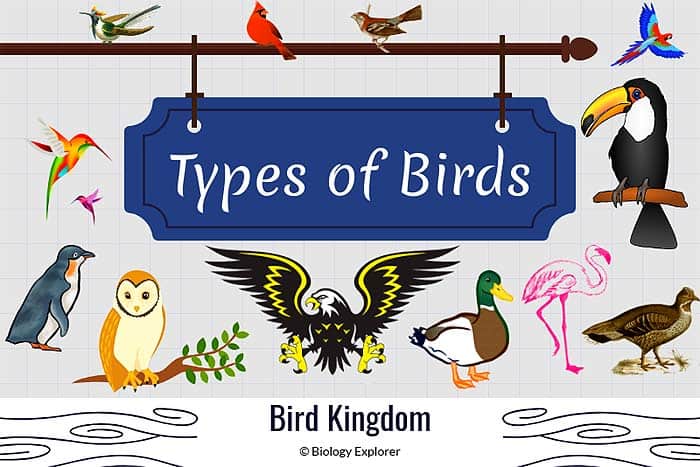
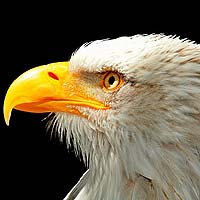
Diurnal Birds of Prey (Accipitriformes)
The first type of birds is from the order Accipitriformes. It contains the diurnal birds of prey (i.e., active in the daytime), such as hawks, eagles, and ospreys. All these large birds have a sharp, hooked beak with visible nostrils.
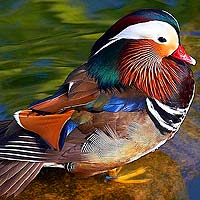
Waterfowl Birds (Anseriformes)
The next kind of birds is from the order Anseriformes. Most of the birds in this classification are known birds such as ducks, swans, and geese. Birds in this order are called Waterfowl birds as they live near water sources such as marine bodies or freshwater ponds.
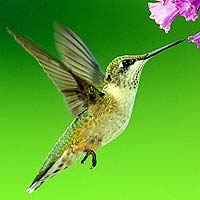
Hummingbirds & Swifts (Apodiformes)
As per the latest taxonomic classification, both hummingbirds and swifts belong to the order Apodiformes. Most of the birds in this order are very tiny and have “underdeveloped” feet. About 10% of the bird species in this group are threatened or endangered.
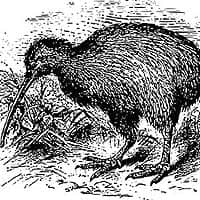
Kiwis & Extinct Birds (Apterygiformes)
The next group of birds belongs to order Apterygiformes, which is composed of flightless birds that live on the ground, such as the famous Kiwi – the national bird of New Zealand. A unique feature of these monogamous kiwis is their long, flexible beak with a downward curve on the end. Most bird species in this order are extinct now.
Suggested Reading: Top 25 Extinct Birds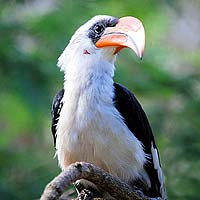
Hornbills & Hoopoes (Coraciiformes)
These types of birds were previously belonged to order Coraciiformes. However, now they are classified into a separate order of their own called Bucerotiformes. This order includes hornbills, hoopoes, and woodhoopoes. The prominent feature of all birds in this taxonomy is their large and hard bills.
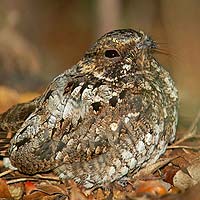
Nightjars, Frogmouths & Oilbirds (Caprimulgiformes)
The next type of birds belongs to the order Caprimulgiformes. This group includes birds such as Nightjars (such as Great Eared Nightjar or Puerto Rican Nightjar), Frogmouths, and Oilbirds. These birds have large heads with large eyes and are mainly nocturnal. They primarily feed on insects.
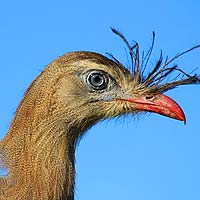
Seriemas (Cariamiformes)
Both present-day and extinct species of birds belong to this bird order – Cariamiformes such as Seriemas. These birds are terrestrial birds that live on the ground and seldom fly. Interestingly, the heads of seriemas are similar to the heads of hawks. Seriemas are restricted to South America only.
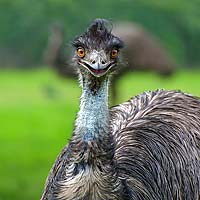
Emus & Cassowaries (Casuariiformes)
Casuariiformes order contains two families of flightless terrestrial birds that are both native to Australia: emus and cassowaries. Previously, these herbivorous birds were grouped with Kiwis but later classified into their own order now. These monogamous birds are enormous and heavy, up to 55 kgs. Females are usually larger than males.
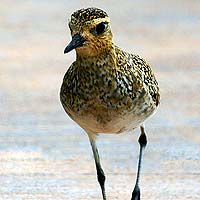
Shorebirds (Charadriiformes)
Charadriiformes is one of the very most extensive bird orders. There are about 350 bird species in it. Surprisingly, these birds have varied in size from 0.006 to 4.4 pounds. As the name suggests, shorebirds live near the water: in wetlands, freshwater, seawater shorelines, and sometimes near the ocean. Some examples of shorebirds include the Great auk, Crested Auklet, Horned Puffin, and African Jacana.
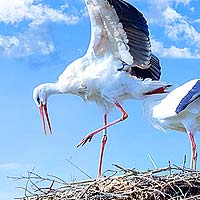
Storks, Herons & Vultures (Ciconiiformes)
The next group of birds also live near the water or are fully aquatic is called Ciconiiformes. Most Ciconiiformes have long necks, long beaks, and feet without webbing. The plumage of most species in the order combines the most uncomplicated colors – grey, white, and black. Currently, 21 species of Ciconiiformes are seriously threatened.
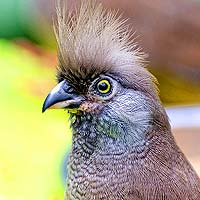
Mousebirds (Coliiformes)
Coliiformes is the smallest bird order which consists of only 6 species of tiny mousebirds. These mousebirds are found in sub-Saharan Africa. These herbivorous birds are social and often found in small groups. Coliiformes nest in colonies.
Suggested Reading: Top Poisonous Birds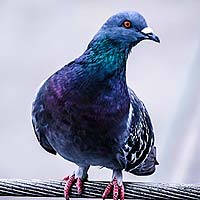
Pigeons and Dodos (Columbiformes)
Columbiformes order embraces both extinct and living species of pigeons (or doves), as well as the famous dodos. Pigeons are known for feeding their young “bird milk” very similar to the milk of mammals. The species of this order can be found almost everywhere.
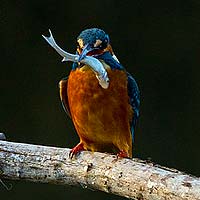
Kingfishers, Rollers, & Bee-eaters (Coraciiformes)
Coraciiformes is a diverse and colorful bird order which includes kingfishers, rollers, and bee-eaters. Most of the species spend a significant part of their life on trees. Ornithologists consider rollers the leading family of this order.
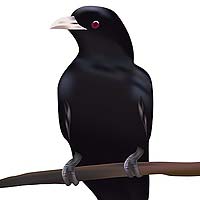
Cuckoos, Roadrunners & Koels (Cuculiformes)
Cuculiformes is one of the most famous bird orders, as it contains parasitic bird species – cuckoos. These birds place their eggs into the nests of birds of other species, and the hatched chicks destroy all other eggs or chicks in the nest. Many birds in the order are very vocal.
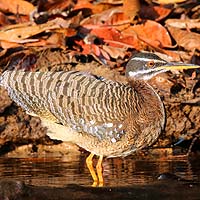
Kagus & Sunbitterns (Eurypygiformes)
Eurypygiformes order contains only a few species, and some of them are already extinct (Lowland kagu and Aptornis). The New Caledonian endemic kagu and sunbittern are two living species in the order. Both the kagu and the sunbittern have plumage with an intricate pattern.
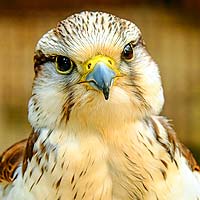
Falcons (Falconiformes)
Birds in Falconiformes order are highly efficient predators – Falcons. All these brown-eyed falcons have hooked bills that help tear up the prey. All these birds have well-developed sight and hearing. Currently, many Falconiformes species are endangered.
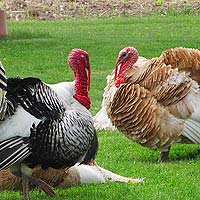
Chickens & Turkeys (Galliformes)
This large and diverse group of birds in order Galliformes includes species traditionally crucial to humans as domestic birds and hunting fowl (Chickens and Turkeys). Many Galliformes have bright crests and ornamental tails. These birds prefer walking & running than flying and predominantly feed on the ground.
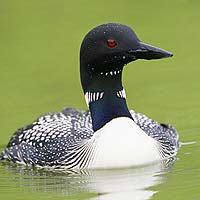
Loons (Gaviiformes)
This next types of birds belong to order Gaviiformes which contains several species of birds that live and hunt on the water – Loons. These sturdy webbed feet birds swim on the water to eat fish. Interestingly, the feet of loons are placed closer to their tails, so they have difficulty walking on land!
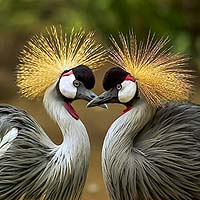
Cranes & Rails (Gruiformes)
Gruiformes order contains very diverse birds, both in size and other features. The most important species of Gruiformes are cranes and quails, but there are also other less-known species. Many Gruiformes have long, slender bills and long & strong legs. These birds are known for special mating rituals!
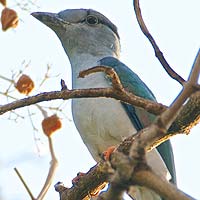
Cuckoo Rollers (Leptosomiformes)
Cuckoo roller belongs to an exclusive bird order – Leptosomiformes which contains just this bird species. Cuckoo rollers live in the Comoro Islands and Madagascar. Surprisingly, the eyes of cuckoo rollers are set back in the face. These birds live primarily in forests and feed on insects.
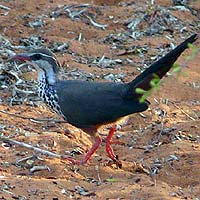
Mesites (Mesitornithiformes)
Mesitornithiformes order contains three species of Mesites found only in Madagascar. They are related to doves. Mesites are small birds. Mesites are nearly flightless and spend most of their time on land. Currently, all mesites are endangered.
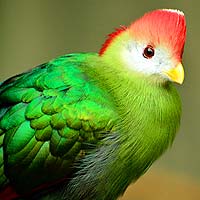
Turacos & Plantain Eaters (Musophagiformes)
The next bird order Musophagiformes contains birds that are found in sub-Saharan Africa, namely turacos and plantain eaters. Musophagiformes have a long tail compared to the overall body length. All of the birds in the order have a crest on their heads. Pigments in these birds’ feathers are copper-based, which is unique in the bird kingdom.
Suggested Reading: Top 25 Colorful Birds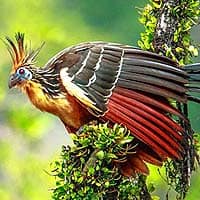
Hoatzins (Opisthocomiformes)
Previously, it was thought that Hoatzins was related to Galliformes, but recently they were assigned to a separate order – Opisthocomiformes. The faces of hoatzins are bare and blue. These herbivorous Hoatzins have a crest on their heads that resembles a fan!
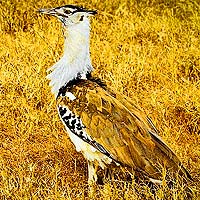
Bustards (Otidiformes)
The birds of the order Otidiformes may belong to the bigger clade Gruiformes in some classifications. However, these birds (Bustards) have several conspicuous characteristics that place them apart, from appearance to behavior. Otidiformes birds prefer walking and running but can fly when frightened.
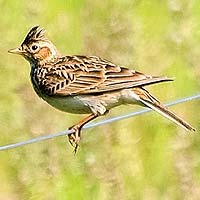
Perching Birds (Passeriformes)
The next types of birds are perching birds which are in the order Passeriformes (the largest bird order in the bird kingdom). All passerines have 12 tail feathers and strong muscles in their voice box or syrinx. Some examples include Crows, Oriental Skylark, Rufous Hornero, Long-tailed tit, and Asian fairy bluebird.
Suggested Reading: Albino Crows | Mimids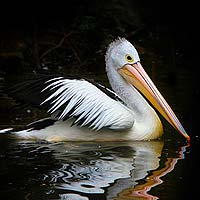
Pelicans & Frigate Birds (Pelecaniformes)
The next set of birds come under Pelecaniformes which unites several families of water birds such as pelicans, cormorants, and frigatebirds. These birds can be found on the coastline of freshwater basins and marine habitats. Many bird species in this order are critically endangered, and some are even extinct.
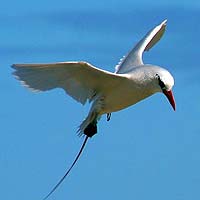
Tropicbirds (Phaethontiformes)
The tropical birds are closely related pelicans and comprised of sea birds in the order Phaethontiformes. There are only three tropicbirds in this order: Red-billed, White-tailed, and Red-tailed. As the name suggests, these birds are usually found in tropical and subtropical regions.
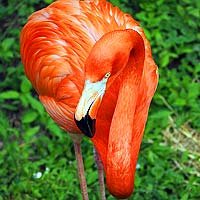
Flamingos (Phoenicopteriformes)
Flamingoes belong to the order Phoenicopteriformes which contains only six species of flamingoes. All Phoenicopteriformes are tall & large birds and have several unique traits. Flamingoes have bristles inside the bills and on their tongues. Explore what do flamingos eat here.
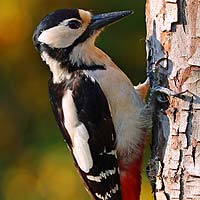
Woodpeckers (Piciformes)
Woodpeckers are the next types of birds belong to the order Piciformes. The main uniting feature of Piciformes is their tendency to nest in tree cavities. Piciformes have strong jaw muscles. Some examples of Piciformes are Puerto Rican Woodpecker, Downy woodpecker, Northern flicker, Brown jacamar, and Moustached Puffbird.
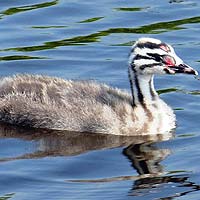
Grebes (Podicipediformes)
The order Podicipediformes contains birds that live mainly in freshwater or near the coast. Interestingly, these birds are different from other known waterbirds. The nails of Podicipediformes are flat. Grebes make floating nests on the water. Some species of Grebes are great crested grebe, red-necked grebe, and short-winged grebe.
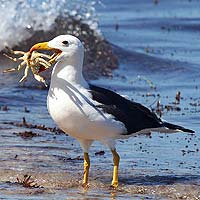
Albatrosses & Petrels (Procellariiformes)
The next bird order Procellariiformes unites sea birds that come on land only for the breeding season! Procellariiformes have a long, hooked bill with tubular nostrils. These birds can eject foul-smelling stomach oil as a defense against predators. Laysan albatross, Shy albatross, Peruvian diving petrel, and Black-capped petrel are examples of species in Procellariiformes.
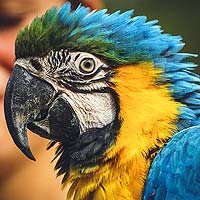
Parrots (Psittaciformes)
The most beloved birds are parrots which belong to the bird order Psittaciformes. The most recognizable feature of parrots is a short, curved beak. Parrots are known for their intelligence and ability to mimic sounds. Some parrot species are Rose-ringed parakeet, Gray parrot, Rainbow lorikeet, white cockatoo, and Kakapo (endangered).
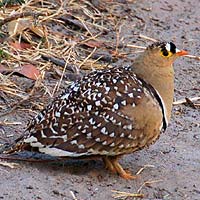
Sandgrouses (Pteroclidiformes)
Previously, Pteroclidiformes was a part of a family of Charadriiformes. It unites several species of desert birds (Sandgrouses), and they are now a separate order. Sandgrouse has pointed wings. Most of the Pteroclidiformes have pinlike central feathers. Tibetan sandgrouse, Spotted sandgrouse, Black-faced Sandgrouse, and Lichtenstein sandgrouse are some of the species of Pteroclidiformes.
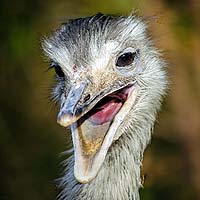
Rheas or Nandus (Rheiformes)
Rheiformes is a small order of large flightless birds (Rheas) that are similar to emus and ostriches, but they are smaller than ostriches. Most of the species in this order are extinct. Rheas have large wings that they can spread like sails while running. These birds are found in South America.
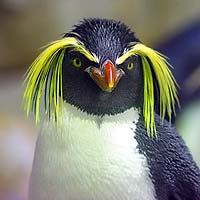
Penguins (Sphenisciformes)
All of the birds (penguins) in the order Sphenisciformes live in the Southern hemisphere. They mostly live in the ocean or near the ocean’s coast. The bills of penguins are long and compressed from the sides. There are 27 types of penguins in the world, which includes the notable species such as Emperor penguin (largest), Galapagos penguin, and Gentoo penguin.
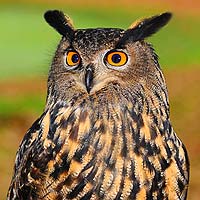
Owls (Strigiformes)
Strigiformes order unites mostly nocturnal and carnivorous birds. Owls have unique soft plumage. All owls have a so-called facial disk that frames the eyes and the bill. Owls use cavities in trees or abandoned nests instead of building their own. There are 244 known types of owls in this order.
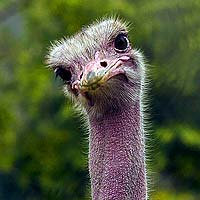
Ostriches (Struthioniformes)
Struthioniformes order contains the only species – Ostriches. Ostriches are different from other ratites – birds without a keel. Ostriches are polygamous and form harems. Interestingly, Ostriches have zero feathers on their legs and necks. Some example subspecies of the common ostrich are North African ostrich, Masai ostrich, and Arabian ostrich (extinct).
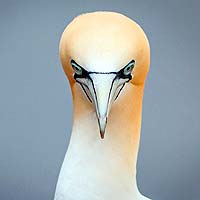
Boobies & Gannets (Suliformes)
Suliformes order unites sea birds that nest in colonies such as boobies and gannets. Previously, they used to belong to the same order as frigate birds (Pelecaniformes). However, they are in their own order – Suliformes. All Suliformes are marine species and spend much of the year far from land. Species in this order are diverse, and here are some examples: Adams Booby, Red-footed booby, Masked booby, and Australasian Gannet.
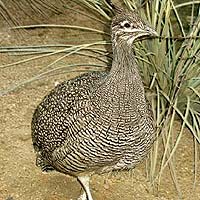
Tinamous (Tinamiformes)
Order Tinamiformes contains several families of chicken-like birds (tinamous) that live predominantly in neotropics. Tinamous can fly but prefers to stay on the ground. Tinamous have short wings and short tails. White-throated tinamou, Hooded tinamou, Barred tinamou, Chilean tinamou, and dwarf tinamou are some examples of species in this order.
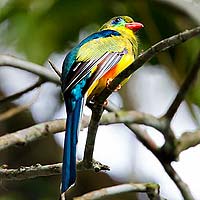
Trogons & Quetzals (Trogoniformes)
The last type of birds belongs to the bird order Trogoniformes which hosts birds such as trogons & quetzals, that mostly live in warmer areas. All Trogoniformes are brightly colored and have long tails. This bird order includes species such as Narina trogon, Red-naped trogon, Cuban trogon, Mountain Trogon, Pavonine Quetzal, and Resplendent Quetzal.
Birds Native To The USA
Here are the top birds native to America categorized by different states:
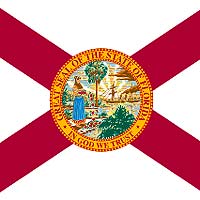
Fabulous Florida Birds
Because of its unique geographic location and suitable tropical climate, Florida is home to some of the most awesome birds ever discovered. Here, we explore the top 10 most spectacular birds of Florida, which are native to the state of Florida, from Scrub-Yay to Killdeer and much more.
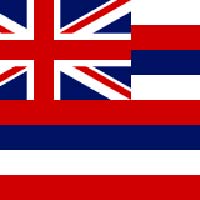
Famous Hawaiian Birds
Hawaii is home to a tremendous diversity of a wide array of birds. Here are 11 of the most endangered Hawaiian Birds with their scientific names and facts. Situated in the middle of the Pacific Ocean, the islands of Hawaii exhibit a vast diversity of flora and fauna and these amazing birds of Hawaii.
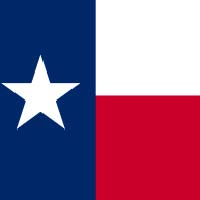
Terrific Texas Birds
Texas has rich bird wildlife because of its geographic location and diverse regions. It is even considered the most diverse bird state in the United States. Here is the list of some of the most famous Texas birds that are native to Texas.

Classic Colorado Birds
Colorado has many potential bird habitats: grasslands, alpine forests, and tundra. Here are the top 15 amazing birds of Colorado and their interesting facts.
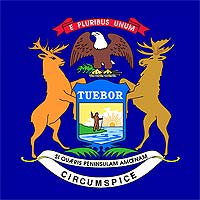
Magnificent Birds of Michigan
Michigan has various habitats inviting for different bird species. Explore the best birds of Michigan and their interesting facts here.
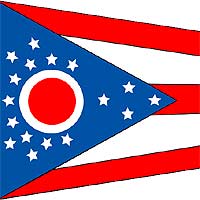
Outstanding Birds of Ohio
Ohio has 5 distinct geographical regions, from Lake & Till Plains to the Appalachian Plateau and Bluegrass Region. Find 15 Best Birds of Ohio here.

Birds of Massachusetts
BioExplorer highlights some of the top 10 resident birds of Massachusetts out of 300+ bird species from the commonwealth, along with their locations in MA.
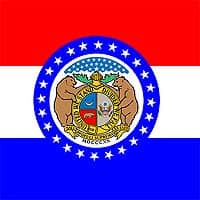
Marvellous Birds of Missouri
Here are the top 15 birds of Missouri and their fascinating fun facts, along with where one can spot each of them in the State of Missouri.

Birds of Oregon
Oregon is notable for its diverse habitats, including alpine meadows, rainforests, pine forests, and much more. Find the top 10 Oregon birds, including its state bird (Western Meadowlark).

Birds of Washington
Explore the overview of 26 must-see top Washington Birds species including facts on goldfinches, owls, hawks, finches and more. This comprehensive guide will help with identification of birds of Washington.

Wonderful Birds of West Virginia
West Virginia has majestic mountains in the Appalachian region, with 78% covered with forests. Explore top birds native to West Virginia here.
Birds By Countries/Territories/Continents
Birds of Puerto Rico
Birds of Africa
Top 25 Rare Birds of All Time
Birds By Color
Black Birds
Different Kinds of Birds
Main Characteristics of Birds
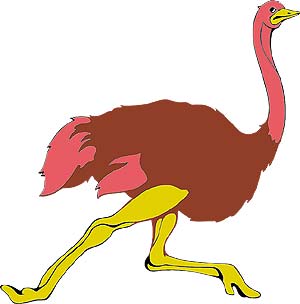 The Class Aves or Birds is just one of the classes of the bigger Kingdom Animalia. The birds share some characteristics with another closely related class – Reptiles, but they also have some features that are unique to these fantastic creatures. Let us go through their main traits.
The Class Aves or Birds is just one of the classes of the bigger Kingdom Animalia. The birds share some characteristics with another closely related class – Reptiles, but they also have some features that are unique to these fantastic creatures. Let us go through their main traits.
- Birds are vertebrates – they have an inner skeleton that contains a spine, limbs, and a skull;
- Birds are endothermic – they maintain constant body temperature by themselves, without depending on outside factors;
- Birds are bipedal (i.e., they move on two limbs when they are on the ground);
- The upper limbs of birds have evolved into specialized structures – wings, that allow flight;
- The body of the most bird is spindle-shaped (to make the flight more comfortable and more effective);
- The birds’ bones are hollow inside to lower the overall weight of the body;
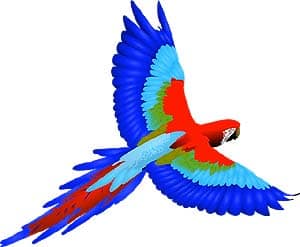 The birds have a beak instead of a mouth with teeth;
The birds have a beak instead of a mouth with teeth;- The body is covered with unique structures – feathers. Only legs are covered with scales;
- The birds have a heart with 4 chambers – this way, the oxygen-rich and oxygen-poor blood is divided correctly, which helps with maintaining constant temperatures;
- The birds have a complex nervous system and a well-developed brain. Many birds are known to be highly teachable and intelligent;
- There are two sexes in birds: male and female;
- Fertilization in birds is internal. As a result of fertilization, a closed-off, waterproof egg is formed.
- The eggs develop outside the body, usually under the care of both parents or sometimes only one.
If we want to define birds strictly, we would say they are warm-blooded, bipedal vertebrate animals with forelimbs evolved into wings, covered in feathers, and with a beak instead of a mouth.
Suggested Reading:
What Do Birds Eat?
![]()


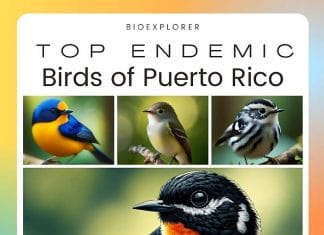
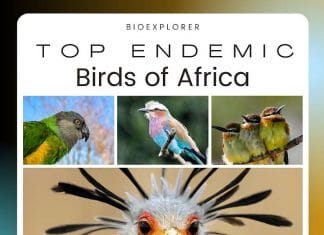
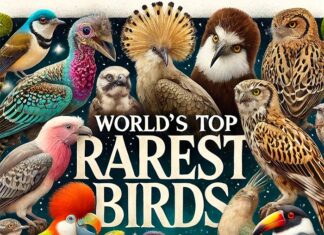
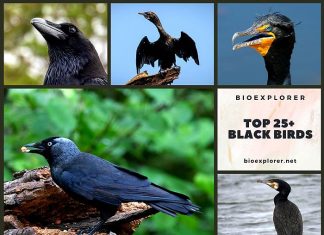
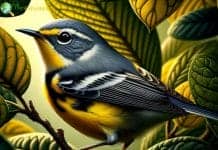
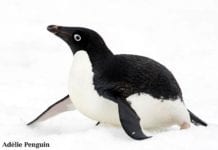
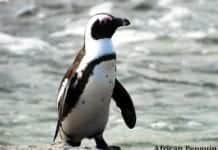
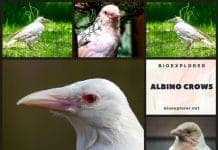
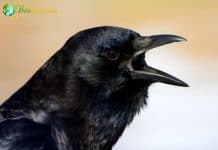
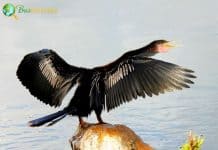
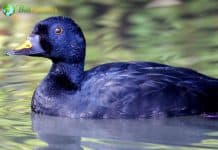
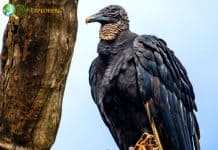
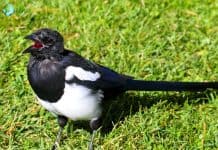
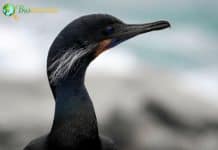
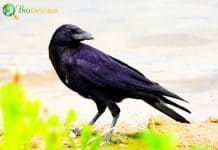
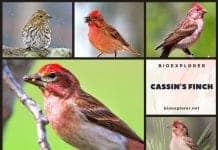

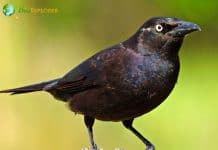
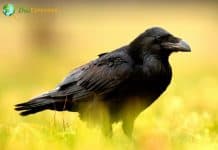
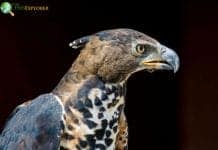
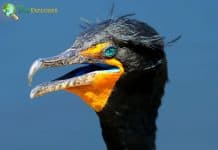
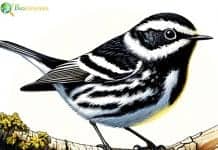
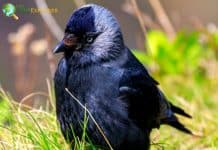
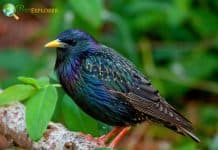
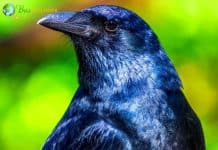
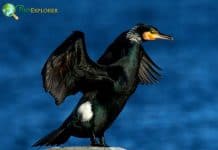
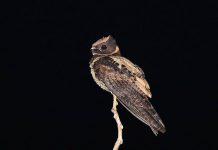
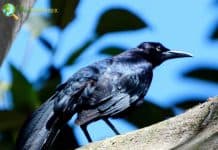
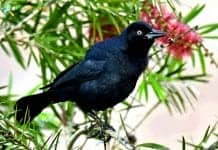
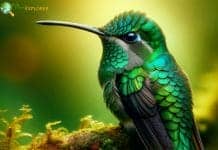
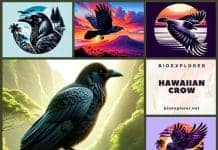
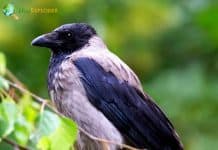
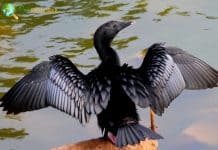
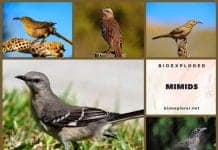
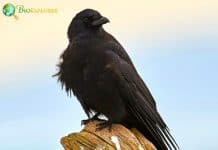
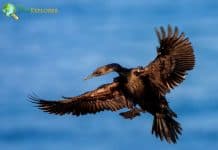
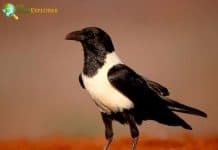
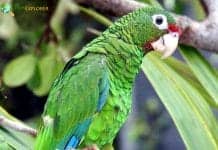
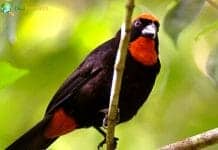
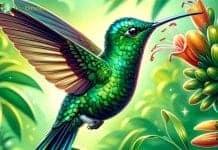
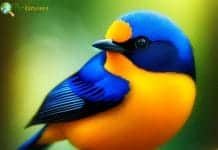
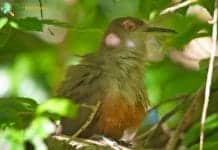
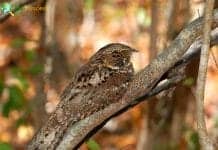
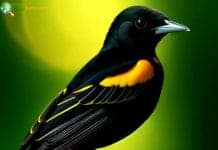
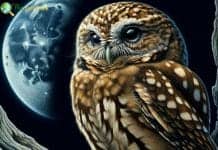
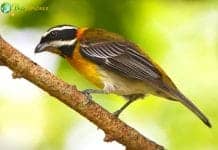
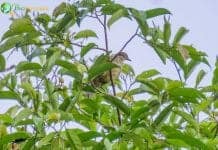
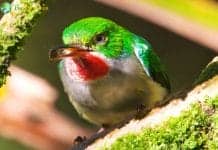
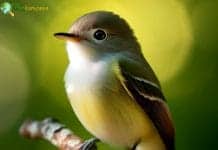
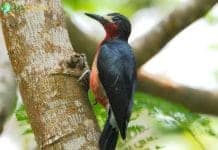
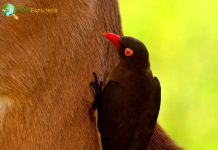
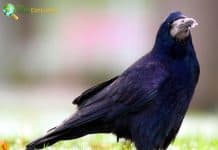
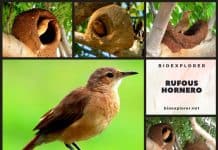
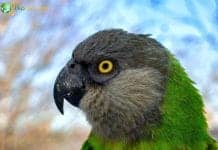
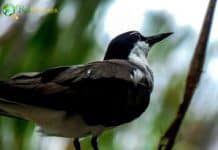
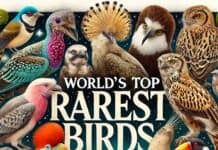
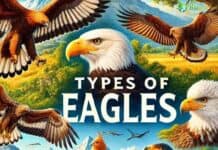
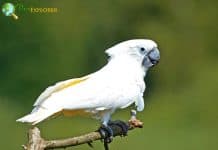
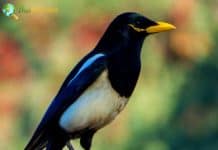
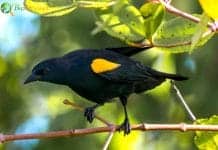
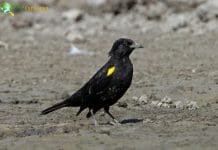
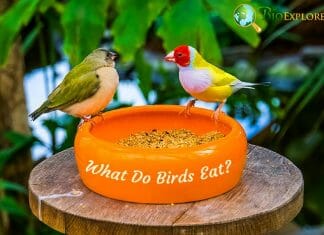















I think your Ohio link is wrongly connected to the Michigan birds page.
Good catch Emma. Fixed it now.
Thanks.